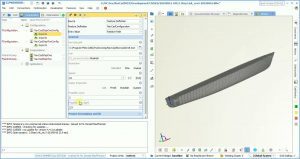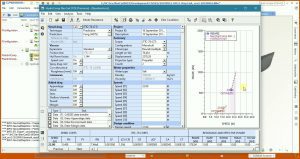More than a hundred international engineers, naval architects, CFD specialists, and design experts met in Berlin in September for a conference focused on applications of CAESES, the popular CAD tool. HydroComp’s Don MacPherson reports on some of the talking points
For three days in Berlin, this correspondent joined more than a hundred engineers, naval architects, CFD specialists, and design experts for the CAESES Users Meeting 2019 (UM2019). For those not familiar with CAESES, this is a high-level design tool for the development, management, and optimization of products and vehicles. It provides two principal capabilities – CAD design (particularly for shape development) and optimization using a variety of design strategies by connections to simulation solvers (such as CFD or our own NavCad software). HydroComp was pleased to be a sponsor for the event, along with colleagues from companies developing tools that connect with CAESES for CFD simulation, gridding of geometries, and High-Performance Computing.

While our interest is in marine vehicle and propulsor design, CAESES is not limited to these disciplines. Its creative approach to shape development by parametric shape creation or defined control of morphed geometries allows a designer to build any parent shape for any purpose, connect it to performance solvers, and run an optimization for a defined objective. For a vision of what future design might look like, Dr. Yuanjiang Pei (of US-based Aramco Services Company) gave an interesting talk on how internal combustion engine design can be accelerated with the use of High-Performance Computing and Artificial Intelligence. He was careful to point out that these tools support and enhance – and do not replace – and engineer’s experience, knowledge, and skills.
Among the various design studies discussed at the UM2019 could be found presentations about wind turbine multi-element blades, turbochargers, water turbines, engine compression and ignition, and pump impellers and volutes. Of course, marine vehicle design held a prominent place at the UM2019, with extensive presentations about America’s Cup catamarans, early-stage design of cargo ships, asymmetric sterns for pre-swirl benefits, and a multiple presentation track of reports from the EU HOLISHIP (Holistic Ship Design) initiative.

While many of the ship design presentations used minimum resistance as an objective function, we want to caution that this is only valid if the ship speed and displacement is held constant throughout the optimization study. For a multi-speed weighted objective, resistance should never be used as this does not capture the “cost” part of the cost-benefit optimization. If we reflect on the real “cost” of ship ownership or operation in the context of its performance, it is power that is most important. Resistance is just a means to get to power. (Still not sure? Consider a planing hull resistance curve. There can be a broad speed range where resistance is more-or-less constant – but power is definitely not.) Using drag as an objective function discounts the significance of the “cost” of resistance at higher speeds. So, we always recommend using effective power (which is simply drag times speed) as the objective for all resistance-only hull form optimizations. Of course, for a more rational and thorough investigation of best performance, the connection objective of the optimization would be the best combination of hull shape and propeller design over a full mission profile for minimum energy, fuel consumption, or emissions.
The event also provided an opportunity to introduce the latest implementation of a CAESES-NavCad connection. Our project demonstrator was a high-speed round-bilge transom-stern patrol craft, with a very simplified objective of minimum bare-hull drag.
The benefits of the new CAESES-NavCad connection for ship design are profound:
- The workflow is a simple two-step process of Configuration and Evaluation.
- Configuration is within the NavCad GUI, with setup guidance provided by an initial Task List, use of the Method Expert ranking feature, review of prediction Confidence Plots, and discovery of “super parameters” exposed with the minimum drag utility and ADVM “Longitudinal Energy Plot”.
- For a full Vessel-Propulsor-Drive system optimization, a design study can be prepared with the CAESES-NavCad connection to find the best mission profile energy usage, including definition of an optimized propeller within each variant evaluation and prediction of fuel use and emissions.
- For an advanced study, total required mission fuel volume and mass can be calculated and returned to CAESES for update of fuel tank design and vessel deadweight.
Additional information about CAESES and the User’s Meeting 2019 can be found at www.caeses.com. Details about the new CAESES-NavCad connection can be obtained by emailing HydroComp at info [at] hydrocompinc [dot] com.
The new CAESES-NavCad connection provides an opportunity for new users of either tool to immediately exploit the power and design creativity found within the connection. The initial configuration for the calculation settings takes only a few minutes (as compared with one or two days with higher-order codes).
Read the full article in the Naval Architect…
Download the full article here.
